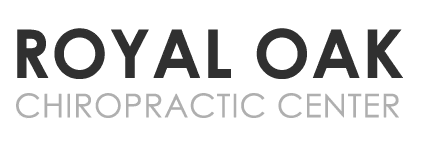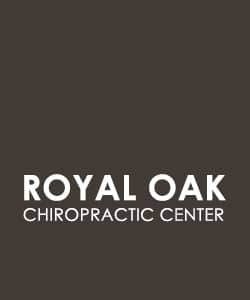Chiropractic Care Can Help That Splitting Headache
Chiropractic Care Can Help That Splitting Headache
What Can You Do to Reduce Your Risk?
What do you do when you get a pounding headache? Grit your teeth and bear the pain? Lie down? Pop a pill and hope the pain goes away?
Headaches are one of the most common health complaints—after all, almost everybody has had headaches at times in their lives. It is estimated that 9 out 10 Americans suffer from headaches, and more than 45 million Americans (about 1 in 6) suffer from chronic headaches each year. In addition, 28 million Americans—13 percent of the population—suffer from migraines, headaches characterized by throbbing head pain often accompanied by nausea and sensitivity to light and sound.
According to the National Headache Foundation (NHF), time lost from work and resulting medical expenses due to headaches are estimated to cost American businesses approximately $50 billion per year!
What can you do if you are among the many suffers? Your chiropractic physician could help you make that pain go away. Research shows that spinal manipulation may be an effective treatment option for tension-type headaches, and headaches that originate in the neck. A recent Australian clinical trial showed that 72 percent of migraine sufferers experienced either “substantial” or “noticeable” improvement after a series of chiropractic treatments.
The 2001 Duke [University] Headache Evidence Report, found that chiropractic was shown to produce “markedly superior results” over amitriptyline (one of the most commonly prescribed medications for headaches) in the treatment of tension-type headaches. The study also noted that chiropractic care produced “sustained improvement in headache frequency and severity” in the treatment of cervicogenic headaches (headaches where the primary contributing structural source of the headache is the cervical spine).
American Chiropractic Association suggest the following:
- If you spend a large amount of time in one fixed position (in front of a computer typing or reading), take a break and stretch every 30 minutes to one hour. The stretches should take your head and neck through a comfortable range of motion.
- Low-impact exercise may help relieve the pain associated with primary headaches. However, if you are prone to dull, throbbing headaches, avoid heavy exercise. Engage in such activities as walking and low-impact aerobics.
- Avoid clenching your teeth. The upper teeth should never touch the lowers, except when swallowing. This results in stress at the temporomandibular joints (TMJ) – the two joints that connect the jaw to the skull —leading to irritation and a form of tension headache.
Reduce Your Risk
- Drink at least eight 8-ounce glasses of water a day to avoid dehydration, which can lead to headaches.
- Avoid caffeine. Foods such as chocolate, coffee, sodas and cocoa contain high levels of the stimulant.
- Avoid foods with a high salt or sugar content. These foods could bring on migraines.
- Avoid alcoholic beverages, which can cause dehydration and headache pain.
How Can Your Chiropractor Help?
Chiropractic physicians undergo extensive training to help their patients in many ways—not just to treat back pain. They know how tension in the spine relates to problems in other parts of the body. If you suffer from primary headaches, your chiropractic physician may:
- Perform spinal manipulation or chiropractic adjustments to improve spinal function and alleviate the stress on your system.
- Provide nutritional advice, recommending a change in diet and perhaps the addition of B complex vitamins.
- Offer advice on posture, ergonomics (work postures), exercises and relaxation techniques. This advice should help relieve the recurring joint irritation and tension in the muscles of the neck and upper back.
If your headache is symptomatic of a health problem that needs the care of another health care provider, your chiropractic physician will refer you to the appropriate specialist.
Categories of Headaches:
- Tension-Type: About 78 percent of adults experience this type of headache. The underlying cause is likely due to chemical and neuronal imbalances in the brain and may be related to muscle tightening in the back of the neck and/or scalp. Migraine: Migraine headaches are characterized by throbbing head pain, usually located on one side of the head. They are often accompanied by nausea and sensitivity to light and sound. The combination of disabling pain and associated symptoms often prevents sufferers from performing routine daily tasks. Some migraine sufferers may experience what is known as an “aura.” They may see light flashes, blind spots, zigzag lines, and shimmering lights or experience numbness and tingling in the arm and face prior to the head pain and other symptoms.
- Cluster: This is the least common type of headache and its cause is unknown. Cluster headaches start suddenly, and most sufferers get one to four headaches per day during a cluster period. Usually pain is localized to one side of the head behind or in the eye and may radiate on the same side to the face and neck.
- Secondary: These are less common and are a symptom of another disease or disorder, such as: infection, high blood pressure, and tumors.
Information provided by the Michigan Chiropractic Society, the American Chiropractic Association, and the National Osteoporosis Foundation.
Chiropractic Center of Royal Oak& Tominello Chiropractic Newsletter
“Chiropractic physicians undergo extensive training to help their patients in many ways—not just to treat back pain."
Phone: 248 548-3333
OFFICE HOURS
Monday
7:00am - 6:00pm
Tuesday
By Appointment
Wednesday
8:00am - 6:00pm
Thursday
Closed
Friday
8:00am - 12:00pm
Saturday
By Appointment
Chiropractic Center of Royal Oak
27623 John R Rd
Madison Heights, MI 48071
(248) 548-3333


